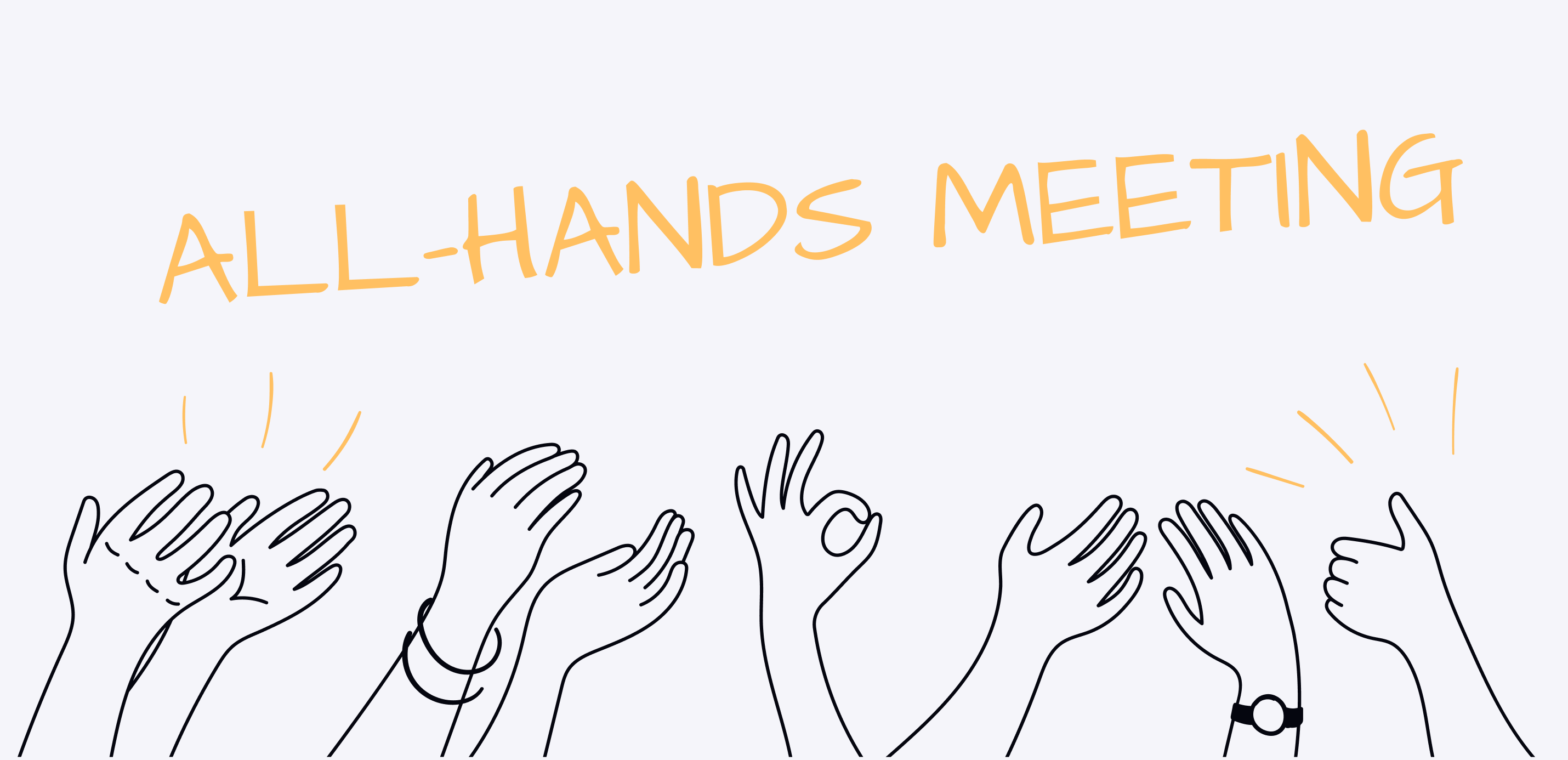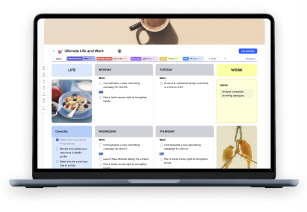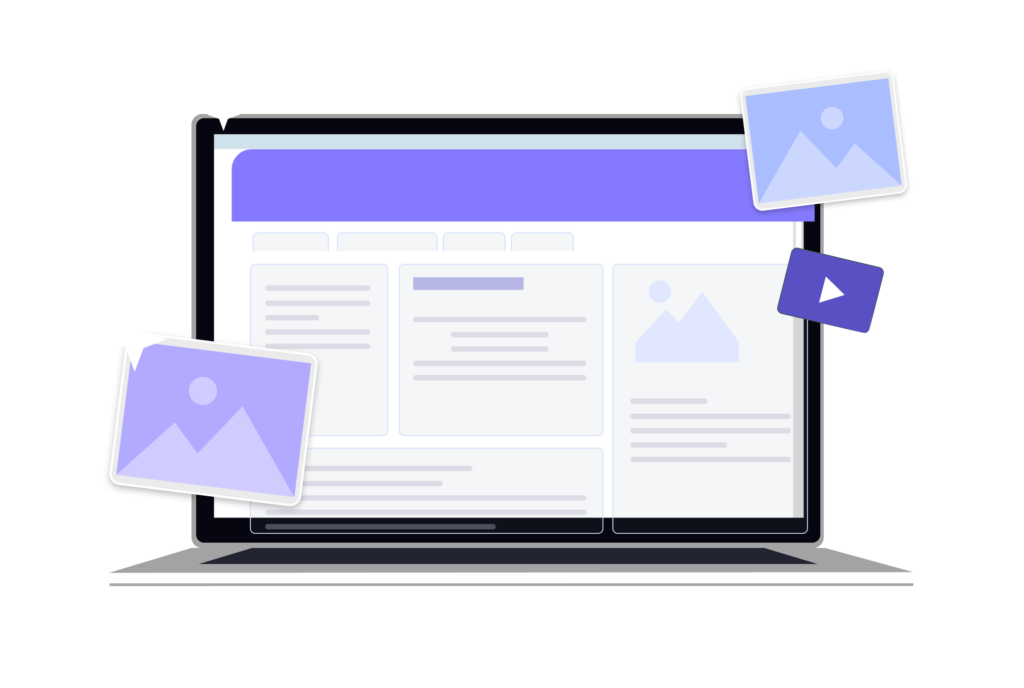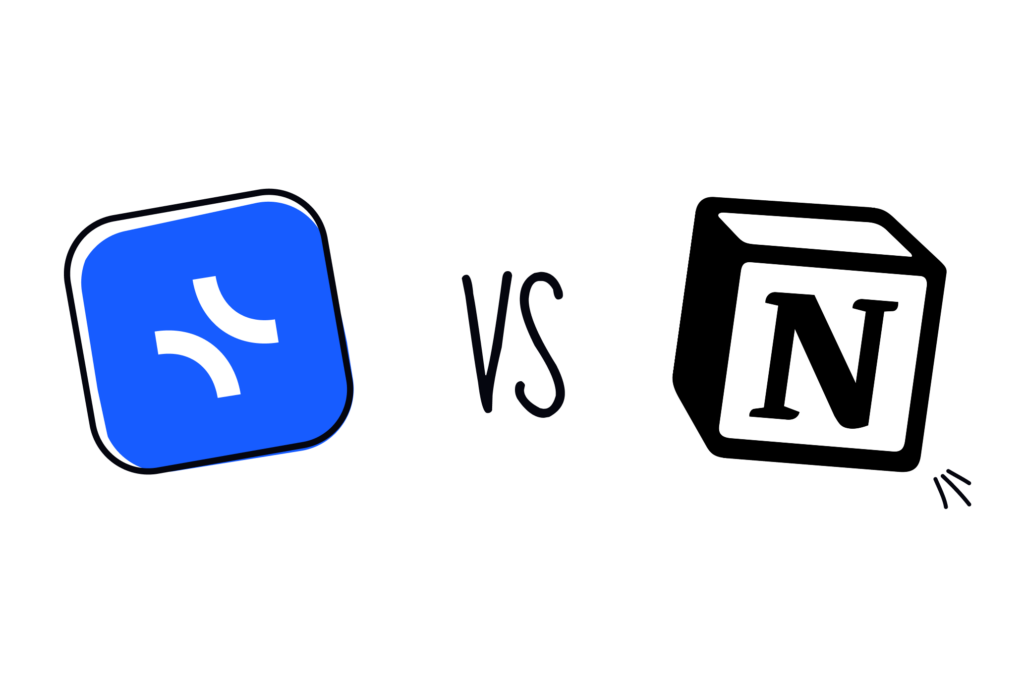Teams have a love-hate relationship with meetings. They are our ability to legally distract from work. They help to resolve issues, even though sometimes they create issues. They allow us to remain connected, on the same page, and wave, especially if we work remotely and never have seen our teammates in real life.
Meeting organization is no easy task, and company-wide meetings are even harder to plan, organize, and moderate. In this article, we’ll discuss what all-hands meetings are, why we need them, what they can bring, and how to organize one in the best possible way.

Definition of all-hands meetings
An all-hands meeting, also known as a town hall meeting or company-wide meeting, is a gathering of the entire company. These meetings are typically held periodically, such as monthly, quarterly, or annually, and serve several important purposes.
In large organizations, all-hands meetings may take a lot of work to organize due to another reason. Sometimes, they can’t gather all the employees in one room. This allows for some employees to attend in person while others join virtually, in a hybrid format. This allows for greater participation and inclusivity, especially for remote or distributed teams.
Purposes of all-hands meetings
An all-hands meeting is a valuable tool for fostering open communication, transparency, and a sense of unity within an organization. By regularly bringing everyone together, companies can keep employees informed, engaged, and aligned with the company’s goals and values.
Rick Maurer, a change management consultant, studied how these big meetings affect attendees. He presents statistics showing that people found them productive and would like their companies to have them regularly. Only 12% of his responders (he collected responses from nearly 150 people) didn’t think the all-hands meetings they attended were valuable.
There are many reasons why you need to schedule such a meeting:
Share important company news and business updates
It’s important to have all the employees updated on the latest company news, the company’s vision, changes in company values, company achievements, new promotions, new team members, new vectors of development, etc. All-hands meetings help inform many people in one shot, avoiding creating misunderstandings and rumors circulating in your office.
This two-way dialogue and the level of transparency it offers foster a sense of trust and inclusivity, as employees feel informed and valued.
Align employees on company goals, vision, and culture
All-hands meetings provide a platform not only for a CEO, executive managers, or stakeholders. It’s also a platform for employees to voice their concerns, ask questions, and offer suggestions directly to leadership. It’s the ability to react faster if people don’t agree with something than if they get an email with this new information.
This two-way communication helps to strengthen the relationship between management and staff and can lead to valuable insights and ideas that might otherwise go unheard.
Boost team morale and encourage employees
Beyond the exchange of information, town hall meetings can also be used to celebrate successes, recognize outstanding employees, and reinforce the company’s values and culture. However, they are not a corporate party or a team-building event.
These gatherings help build a sense of community that stands together and work together on shared dreams and purpose among employees. It contributes to increased engagement, motivation, and productivity, especially when management or HR has spotted that people lack this sense of connection and motivation to move.
Build a positive company culture
Overall, regular all-hands meetings help everyone feel included, important, and valued. They allow employees to participate in the process and speak up when something worries them. Also, new hires can see that they will stay visible in this new environment they step into.
Planning an effective all-hands meeting
Organizing something as big as an all-hands meeting takes time and certain skills, especially the ability to plan dozens of smaller processes. xTiles can be your reliable helper at this stage. Additionally, you can work collaboratively on organizing your meetings. Also, if your company is really big, and it’s hard to keep everyone updated on the progress, you may create a project shared with your colleagues to let them know about the latest decisions and where you currently are.
You may use the xTiles Action Plan Template to organize a meeting that will make a difference.

Here is a step-by-step guide on how to organize a great all-hands meeting with only one tool at your disposal:
Clearly structured agenda
Organizing a company meeting requires careful planning and preparation. If you have organized at least one meeting with people from different teams, you can imagine how hard it is to gather an entire organization.
A company all-hands meeting is often about surprises. However, this is not a reason to keep attendees uninformed about what awaits them because they also need to prepare. A clearly structured agenda is essential to ensure the meeting can stay focused and productive.
The agenda for a successful all-hands meeting should cover:
- Company goals and vision
- Business updates and key projects
- Team highlights and shout-outs
- Company culture and values
- Q&A session
You can create this document in xTiles, devoting a separate tile to each section, and share it among all attendees before the meeting. It’s possible to add links, videos, tables, etc., to make your agenda structured and valuable for attendees.
Involve team leaders and upper management
Involve the team leadership team and upper management in the planning process from the beginning. This move will help you collect input and ensure that key topics and priorities are included in your all-hands meeting agenda.
You may conduct a short meeting with them to ensure you share a similar vision for the future company-wide gathering. If they are too busy, create a document in xTiles with different pages assigned to their names where they can share their thoughts. If you know exactly what you need, design a structured template to help them provide the information you need faster.
Collect questions from employees in advance
One crucial step is to collect questions from employees in advance. This will help save time and prevent your meeting from becoming a mess when everyone asks similar questions. Sometimes, people have questions but don’t have the courage to speak up, especially in front of others. That’s how you can host meetings that are valuable for every team member.
You can do it through an online form or by encouraging employees to submit their queries to their managers. Online forms offer more privacy, especially if there are some matters an employee doesn’t want to discuss with others. However, if there are no sensitive matters you want to discuss during the meetings, you can create one shared project in xTiles and encourage your colleagues to write down their questions.
Addressing these questions during the all-hands meeting promotes open communication and shows upper management values employee feedback.
Prepare visual aids and materials
Listening and listening and listening might turn your meeting into torture for anyone present, whether virtually or in person. Social media has affected our ability to concentrate on something longer than a TikTok video. That’s why it’s reasonable to prepare visual aids and materials to make the meeting more engaging and easy to follow.
What should it be? It depends on you and your approach to communicating information through visual elements. Presentations, slides, or videos can be used to share important company news, business updates, and key metrics. Also, it never hurts to add something funny to minimize the tension, and make everyone feel at ease. A meme, a funny dog picture, or something else you consider appropriate will do.
You can collect visuals in xTiles. For example, you can use the xTiles Visual Board Template to ensure all the materials have an appropriate tone.
For virtual all-hands meetings or hybrid meetings with remote attendees, ensure that video conferencing tools like Google Meet or Zoom are set up correctly to avoid technical difficulties. This way, people can see the visuals you spent so much time preparing.
Read article: How to Take Aesthetic Notes? Tips, Tricks, and Free Templates
Logistical considerations
Logistics play a crucial part in organizing a successful all-hands meeting. You need to gather the whole team; otherwise, the meeting won’t be as all-hands as you want it to be.
In-person, virtual or hybrid format
When planning an all-hands meeting, companies must decide on the appropriate format. Do you want it to be an in-person meeting? Is it possible to gather all of your employees in one room? A virtual meeting format is more suitable for your company. You can also take a hybrid approach, where people who can’t attend in person will join you using video conference tools.
All of these formats have their advantages. For example, in-person meetings foster a sense of community and allow face-to-face interactions with people who normally don’t communicate in the office, which can be particularly valuable for team-building and employee engagement.
Virtual meetings suit companies that don’t have physical offices, and their employees work from all over the world. Also, it’s important to note that virtual meetings are usually cheaper to organize than in-person ones since there is no need to arrange snacks and beverages for many people.
Hybrid meetings combine the benefits of in-person and virtual formats, allowing employees to attend physically or remotely. This approach ensures that the entire company can participate, regardless of their location, and promotes inclusivity. Also, it gives more space for people, allowing them to decide which format is the best for them now. When gathering 50, 100, 200, or more people, you must understand that not everyone might feel comfortable being present. They may present themselves even better from their living room, wearing their pajama pants.
Accommodating remote teams and employees
If your all-hands meeting is virtual, you still have a lot of preparation ahead of you. It’s crucial to ensure that the gathering is accessible and engaging for employees who will join online.
Usually, preparation for an online meeting involves providing dedicated virtual meeting rooms or breakout sessions specifically for remote attendees. It’s also essential to ensure that remote employees have the necessary tools and technology to participate fully, such as reliable internet connections and appropriate audio/video equipment.
Another detail to check is whether everyone got their invitations (links) before the meeting started so that you won’t have to resolve this issue at the last moment. Also, ensure all participants are familiar with the chosen one. When you start planning the event and collecting information from your attendees, you can add a question like “What video conference tool is preferable for you to attend our all-hands meeting?”
Additionally, you need to consider time zone differences when scheduling virtual all-hands meetings to ensure maximum attendance and participation from remote teams.
Addressing technical difficulties
Despite careful planning, technical difficulties sometimes still arise during virtual or hybrid all-hands meetings. These could include issues with audio or video quality, connectivity problems, or problems with screen sharing or other features.
Be ready for something like that to happen to you, and have a backup plan. This may involve having a dedicated technical support team available to troubleshoot issues in real-time or providing clear instructions on how to report and resolve common technical problems.
Additionally, you may record the meeting or switch to a different video conferencing platform, as rescheduling a meeting where the entire company is present might be impossible.
Best practices during the meeting
Engaging employees (shout-outs, celebrations, etc.)
One effective way to keep everyone engaged is by incorporating shout-outs and celebrations into the agenda. Recognize outstanding achievements, milestones, or exceptional contributions from individuals or teams. This not only boosts teams’ and individuals’ morale but also reinforces the company’s values and positive company culture.
Additionally, you may include interactive elements or activities encouraging employee participation, such as polls, quizzes, or breakout discussions (depending on your all-hands meeting agenda). These tactics may help break up the monotony of a one-way presentation, break the ice between leaders and employees, and keep the entire team actively involved.
Allowing time for feedback and Q&A
Set aside dedicated time for a Q&A session, during which employees can ask questions, provide feedback, or raise concerns. This demonstrates that the leadership team values employee input and helps address any uncertainties or misunderstandings.
You may encourage employees to come to the meetings with their questions at hand when you’re collecting their responses for the planning stage.
Role of meeting moderator
A skilled meeting moderator can significantly enhance the overall experience and effectiveness of an all-hands meeting for all attendees. Usually, it’s a person with great communication and people management skills—someone who has great relationships with everyone in the company.
The moderator’s responsibilities typically include:
- Setting the tone and maintaining a positive, engaging atmosphere throughout the whole meeting.
- Keeping the meeting on track and ensuring adherence to the agenda and allocated time slots.
- Facilitating the Q&A session by collecting, organizing, and directing questions to the appropriate speakers.
- Encouraging participation and involvement from attendees, whether in person or virtual.
- Addressing any technical difficulties or logistical issues that may arise during the meeting.
Post-meeting follow-up
An all-hands meeting isn’t finished when everyone leaves the room or the video conference. After the end, there will be a lot of work, too. You will need to process everything that was said, especially if some important issues were discussed. You may need to create an action plan to resolve them and, afterward, plan a new meeting to discuss the results.
Despite the effort, sometimes, not all the questions and queries can be answered during one meeting. However, following up on these outstanding questions is still important. Assign responsible parties to gather the necessary information and provide comprehensive responses to the entire team.
Also, after the meeting, it’s crucial to share notes with all the attendees and those who couldn’t be present to ensure they have access to information. You may use the xTiles Meeting Notes Template to write down key points discussed during the meeting.
Feedback is crucial for improving the effectiveness of future all-hands meetings. You may use a Google Form again to learn what people like about the meetings, what they didn’t, what they would like to improve, etc.

Schedule your next all-hands meeting
It’s important to remain consistent. One town hall meeting won’t resolve issues and won’t contribute to building company culture and tight bounds. The effect will be temporary. That’s why it’s important to conduct such meetings regularly.
Now, that you know the process, have answers to all “why?”, and have xTiles as your reliable helper for planning, you can do it easier and faster.
Read article: Mastering Meeting Notes: Elevate Your Team’s Productivity with Proven Strategies
Summing up
A company can live without regular all-hands meetings. However, will a company remain united, focused on similar goals, and satisfied with the level of communication? Doubtfully. All-hands meetings are necessary for healthy relationships between the CEO, management, stakeholders, and all the employees.
They help to answer many questions in a short period of time, which is especially beneficial for large companies, where one-to-one meetings with all the employees will take ages.
Many people are scared of them because they believe organization and planning will take too much time and effort. Surely, it might if you don’t have the right planning tool and clear guide at your disposal.
With xTiles and its flexible planning features, no big meeting will be a mess. Try our free templates, create your own projects, work on them collaboratively, share updates, etc., and you will want to have an all-hands meeting regularly!

FAQ
What is the difference between an all-hands meeting and a regular team meeting?
An all-hands meeting involves the entire company, while team meetings are typically smaller and focused on a specific department or project.
How can I ensure our all-hands meeting is engaging for remote employees?
Provide dedicated virtual meeting rooms or breakout sessions for remote attendees. Ensure they have the necessary technology and clear instructions for participating fully.
What role does a moderator play in an all-hands meeting?
The moderator sets the tone, keeps the meeting on track and focused on the agenda. They facilitate the Q&A session by collecting and directing questions appropriately.
Why is it important to follow up after an all-hands meeting?
Following up ensures all attendees have access to the information shared, even if they missed the meeting. It allows addressing any outstanding questions or concerns. Seeking feedback also helps improve the effectiveness of your future all-hands meetings.


